Ondřej Dušek
Large Language Models as Span Annotators
Apr 11, 2025Abstract:For high-quality texts, single-score metrics seldom provide actionable feedback. In contrast, span annotation - pointing out issues in the text by annotating their spans - can guide improvements and provide insights. Until recently, span annotation was limited to human annotators or fine-tuned encoder models. In this study, we automate span annotation with large language models (LLMs). We compare expert or skilled crowdworker annotators with open and proprietary LLMs on three tasks: data-to-text generation evaluation, machine translation evaluation, and propaganda detection in human-written texts. In our experiments, we show that LLMs as span annotators are straightforward to implement and notably more cost-efficient than human annotators. The LLMs achieve moderate agreement with skilled human annotators, in some scenarios comparable to the average agreement among the annotators themselves. Qualitative analysis shows that reasoning models outperform their instruction-tuned counterparts and provide more valid explanations for annotations. We release the dataset of more than 40k model and human annotations for further research.
OpeNLGauge: An Explainable Metric for NLG Evaluation with Open-Weights LLMs
Mar 14, 2025Abstract:Large Language Models (LLMs) have demonstrated great potential as evaluators of NLG systems, allowing for high-quality, reference-free, and multi-aspect assessments. However, existing LLM-based metrics suffer from two major drawbacks: reliance on proprietary models to generate training data or perform evaluations, and a lack of fine-grained, explanatory feedback. In this paper, we introduce OpeNLGauge, a fully open-source, reference-free NLG evaluation metric that provides accurate explanations based on error spans. OpeNLGauge is available as a two-stage ensemble of larger open-weight LLMs, or as a small fine-tuned evaluation model, with confirmed generalizability to unseen tasks, domains and aspects. Our extensive meta-evaluation shows that OpeNLGauge achieves competitive correlation with human judgments, outperforming state-of-the-art models on certain tasks while maintaining full reproducibility and providing explanations more than twice as accurate.
Automatic Metrics in Natural Language Generation: A Survey of Current Evaluation Practices
Aug 17, 2024
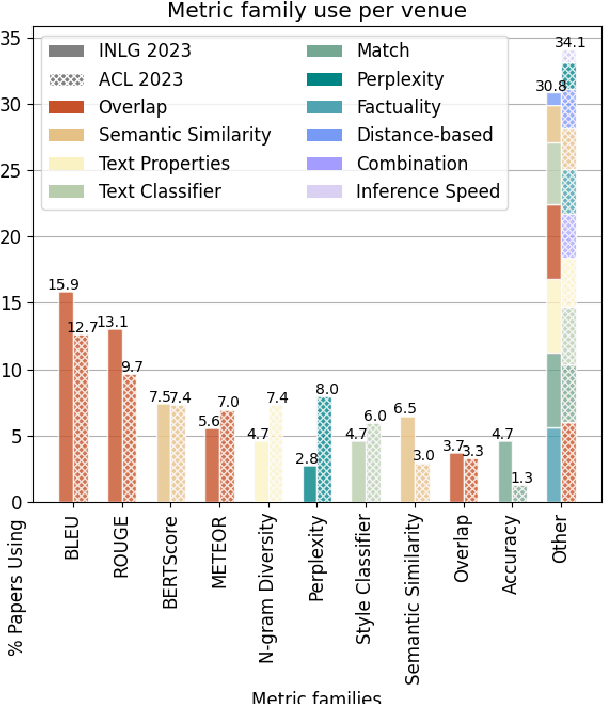
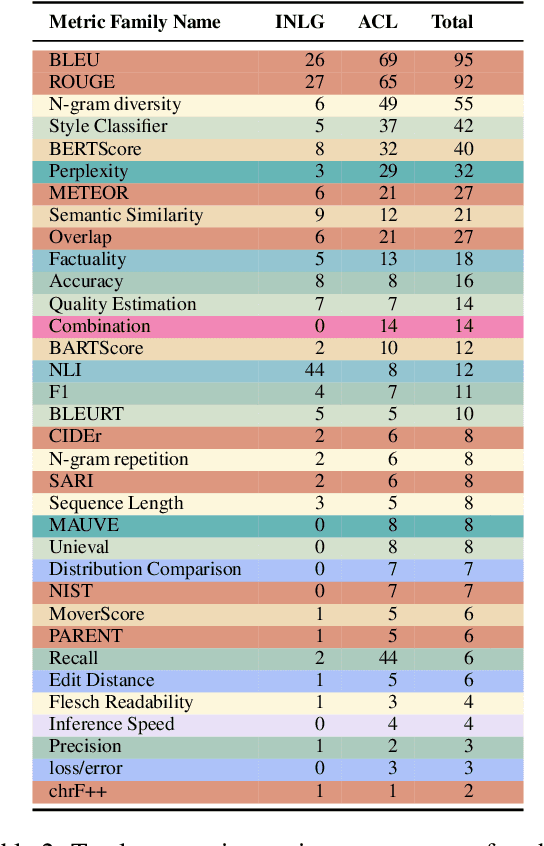
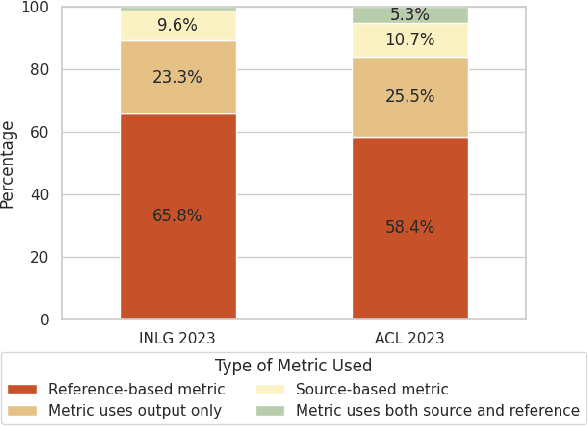
Abstract:Automatic metrics are extensively used to evaluate natural language processing systems. However, there has been increasing focus on how they are used and reported by practitioners within the field. In this paper, we have conducted a survey on the use of automatic metrics, focusing particularly on natural language generation (NLG) tasks. We inspect which metrics are used as well as why they are chosen and how their use is reported. Our findings from this survey reveal significant shortcomings, including inappropriate metric usage, lack of implementation details and missing correlations with human judgements. We conclude with recommendations that we believe authors should follow to enable more rigour within the field.
Teaching LLMs at Charles University: Assignments and Activities
Jul 29, 2024Abstract:This paper presents teaching materials, particularly assignments and ideas for classroom activities, from a new course on large language models (LLMs) taught at Charles University. The assignments include experiments with LLM inference for weather report generation and machine translation. The classroom activities include class quizzes, focused research on downstream tasks and datasets, and an interactive "best paper" session aimed at reading and comprehension of research papers.
factgenie: A Framework for Span-based Evaluation of Generated Texts
Jul 25, 2024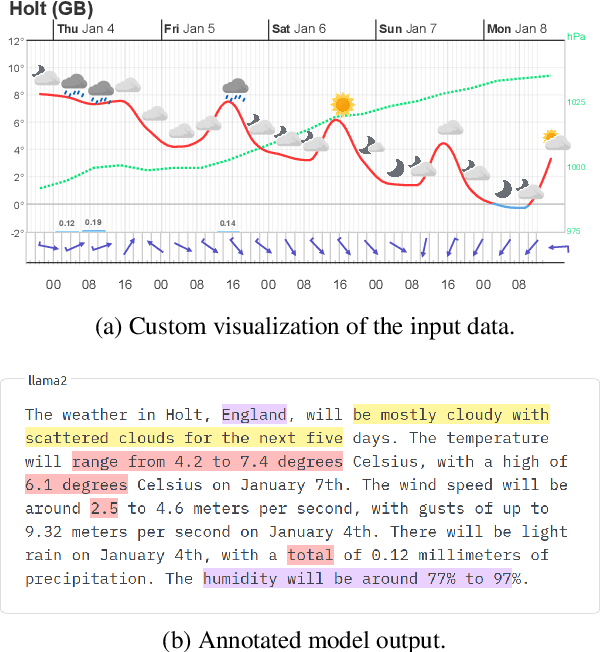

Abstract:We present factgenie: a framework for annotating and visualizing word spans in textual model outputs. Annotations can capture various span-based phenomena such as semantic inaccuracies or irrelevant text. With factgenie, the annotations can be collected both from human crowdworkers and large language models. Our framework consists of a web interface for data visualization and gathering text annotations, powered by an easily extensible codebase.
Are Large Language Models Actually Good at Text Style Transfer?
Jun 09, 2024Abstract:We analyze the performance of large language models (LLMs) on Text Style Transfer (TST), specifically focusing on sentiment transfer and text detoxification across three languages: English, Hindi, and Bengali. Text Style Transfer involves modifying the linguistic style of a text while preserving its core content. We evaluate the capabilities of pre-trained LLMs using zero-shot and few-shot prompting as well as parameter-efficient finetuning on publicly available datasets. Our evaluation using automatic metrics, GPT-4 and human evaluations reveals that while some prompted LLMs perform well in English, their performance in on other languages (Hindi, Bengali) remains average. However, finetuning significantly improves results compared to zero-shot and few-shot prompting, making them comparable to previous state-of-the-art. This underscores the necessity of dedicated datasets and specialized models for effective TST.
Multilingual Text Style Transfer: Datasets & Models for Indian Languages
May 31, 2024



Abstract:Text style transfer (TST) involves altering the linguistic style of a text while preserving its core content. This paper focuses on sentiment transfer, a vital TST subtask (Mukherjee et al., 2022a), across a spectrum of Indian languages: Hindi, Magahi, Malayalam, Marathi, Punjabi, Odia, Telugu, and Urdu, expanding upon previous work on English-Bangla sentiment transfer (Mukherjee et al., 2023). We introduce dedicated datasets of 1,000 positive and 1,000 negative style-parallel sentences for each of these eight languages. We then evaluate the performance of various benchmark models categorized into parallel, non-parallel, cross-lingual, and shared learning approaches, including the Llama2 and GPT-3.5 large language models (LLMs). Our experiments highlight the significance of parallel data in TST and demonstrate the effectiveness of the Masked Style Filling (MSF) approach (Mukherjee et al., 2023) in non-parallel techniques. Moreover, cross-lingual and joint multilingual learning methods show promise, offering insights into selecting optimal models tailored to the specific language and task requirements. To the best of our knowledge, this work represents the first comprehensive exploration of the TST task as sentiment transfer across a diverse set of languages.
Text Detoxification as Style Transfer in English and Hindi
Feb 12, 2024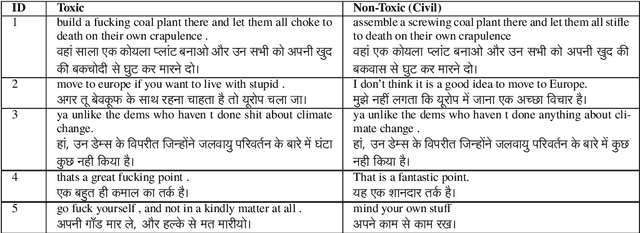
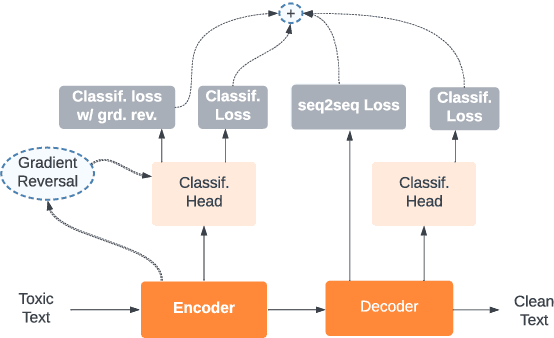

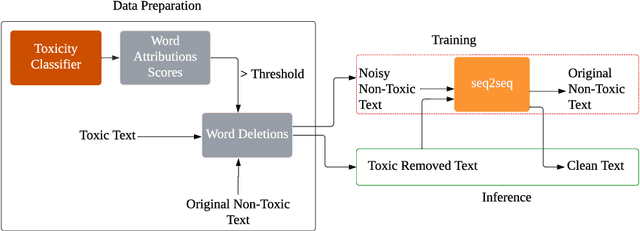
Abstract:This paper focuses on text detoxification, i.e., automatically converting toxic text into non-toxic text. This task contributes to safer and more respectful online communication and can be considered a Text Style Transfer (TST) task, where the text style changes while its content is preserved. We present three approaches: knowledge transfer from a similar task, multi-task learning approach, combining sequence-to-sequence modeling with various toxicity classification tasks, and, delete and reconstruct approach. To support our research, we utilize a dataset provided by Dementieva et al.(2021), which contains multiple versions of detoxified texts corresponding to toxic texts. In our experiments, we selected the best variants through expert human annotators, creating a dataset where each toxic sentence is paired with a single, appropriate detoxified version. Additionally, we introduced a small Hindi parallel dataset, aligning with a part of the English dataset, suitable for evaluation purposes. Our results demonstrate that our approach effectively balances text detoxication while preserving the actual content and maintaining fluency.
Leak, Cheat, Repeat: Data Contamination and Evaluation Malpractices in Closed-Source LLMs
Feb 06, 2024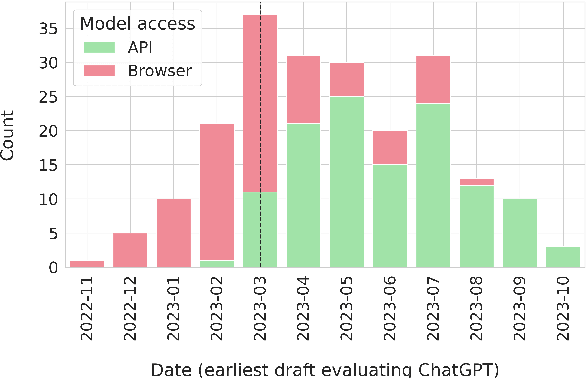
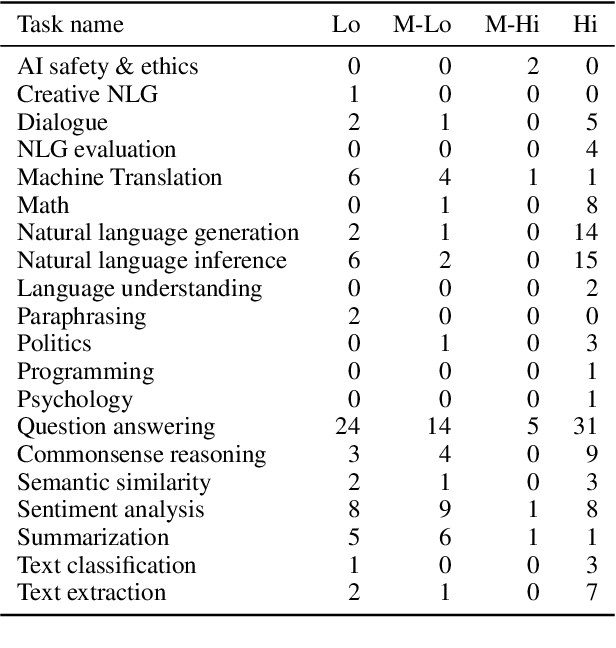
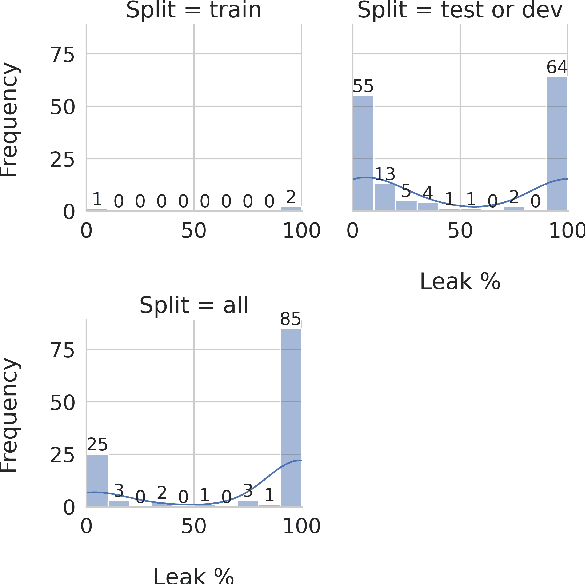
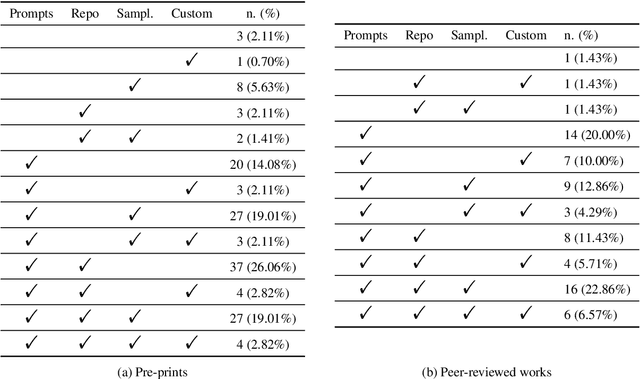
Abstract:Natural Language Processing (NLP) research is increasingly focusing on the use of Large Language Models (LLMs), with some of the most popular ones being either fully or partially closed-source. The lack of access to model details, especially regarding training data, has repeatedly raised concerns about data contamination among researchers. Several attempts have been made to address this issue, but they are limited to anecdotal evidence and trial and error. Additionally, they overlook the problem of \emph{indirect} data leaking, where models are iteratively improved by using data coming from users. In this work, we conduct the first systematic analysis of work using OpenAI's GPT-3.5 and GPT-4, the most prominently used LLMs today, in the context of data contamination. By analysing 255 papers and considering OpenAI's data usage policy, we extensively document the amount of data leaked to these models during the first year after the model's release. We report that these models have been globally exposed to $\sim$4.7M samples from 263 benchmarks. At the same time, we document a number of evaluation malpractices emerging in the reviewed papers, such as unfair or missing baseline comparisons and reproducibility issues. We release our results as a collaborative project on https://leak-llm.github.io/, where other researchers can contribute to our efforts.
Beyond Reference-Based Metrics: Analyzing Behaviors of Open LLMs on Data-to-Text Generation
Jan 18, 2024Abstract:We investigate to which extent open large language models (LLMs) can generate coherent and relevant text from structured data. To prevent bias from benchmarks leaked into LLM training data, we collect Quintd-1: an ad-hoc benchmark for five data-to-text (D2T) generation tasks, consisting of structured data records in standard formats gathered from public APIs. We leverage reference-free evaluation metrics and LLMs' in-context learning capabilities, allowing us to test the models with no human-written references. Our evaluation focuses on annotating semantic accuracy errors on token-level, combining human annotators and a metric based on GPT-4. Our systematic examination of the models' behavior across domains and tasks suggests that state-of-the-art open LLMs with 7B parameters can generate fluent and coherent text from various standard data formats in zero-shot settings. However, we also show that semantic accuracy of the outputs remains a major issue: on our benchmark, 80% of outputs of open LLMs contain a semantic error according to human annotators (91% according to GPT-4). Our code, data, and model outputs are available at https://d2t-llm.github.io.
 Add to Chrome
Add to Chrome Add to Firefox
Add to Firefox Add to Edge
Add to Edge